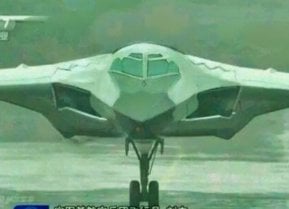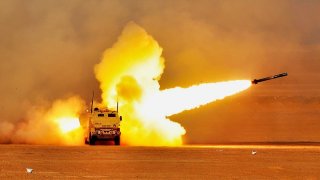Ukraine Shot Down Two Russian A-50 Spy Planes (and Hit the Repair Factory)
Ukraine's strikes on Russia's costly A-50 surveillance planes are seriously impacting Moscow's intelligence capabilities. Kyiv has destroyed at least two A-50s in the air, with another damaged in Belarus. Russia, possessing only a handful of these aircraft, struggles to replace them. Ukraine's recent attack on a repair facility further hinders Russia's efforts.
Summary: Ukraine's strikes on Russia's costly A-50 surveillance planes are seriously impacting Moscow's intelligence capabilities. Kyiv has destroyed at least two A-50s in the air, with another damaged in Belarus. Russia, possessing only a handful of these aircraft, struggles to replace them. Ukraine's recent attack on a repair facility further hinders Russia's efforts. This leaves Moscow with potentially only six operational A-50s, restricting their ability to track Ukrainian movements and forcing them closer to the frontlines, increasing vulnerability. While Russia did destroy a US-supplied Patriot missile system, drone surveillance remains an imperfect substitute for the A-50s.
The Russian Air Force Has Problems in Ukraine
Already this year, Ukraine's military has shot down two of Russia's A-50 long-range radar detection and control aircraft, worth $330 million each. A Ukrainian drone also damaged another on the ground in Belarus last year. The loss of any of the aircraft has been seen as potentially devastating for Moscow, as Russia began the war just over two years ago with only nine of the reconnaissance planes.
One of the Beriev A-50 airborne warning and control (AWACS) was downed over the Sea of Azov in mid-January, while a second was shot down over Russian territory in late February. The Kremlin has scrambled to replace the aircraft, reportedly attempting to refurbish least one A-50 from the several dozen that are no longer deemed flyable.
Ukraine responded by conducting a drone strike on the aviation facility in the city of Taganrog tasked with repairing A-50s. According to a report from Newsweek , the plant was "heavily damaged," and an A-50 aircraft close to the facility was either destroyed or sustained significant damage. It isn't clear whether that particular plane was damaged or operational.
Kyiv's claims haven't been independently verified and the Kremlin hasn't commented on the news. However, as Forbes.com reported – citing open source intelligence – as recently as February 29, an A-50 was parked outside the final-assembly shed. The aircraft wasn't visible in the post-strike imagery, and there is speculation it was inside the shed when the drone attack occurred.
Russia may now have as few as six A-50s in the sky, which could limit its ability to monitor the skies over Ukraine. That could force the remaining A-50s to operate closer to the frontlines, which would put them in the crosshairs of Kyiv's anti-aircraft launchers.
The good news for Moscow is that its forces destroyed a U.S.-made MIM-104 Patriot air defense system last week while it was being relocated to a new forward position. Both sides have thus taken a loss of equipment that can only be described as irreplaceable in the short term. Moscow has already been attempting to fill the reconnaissance gap with drones, but the stop-gap measure has reportedly been met with limited success.
A-50: Russia's AWACS
The Beriev A-50 (NATO reporting name "Mainstay") was developed by the Soviet Union in the 1970s and is based on the Ilyushin Il-76 transport. Developed to replace the Tupolev Tu-126 (NATO reporting name "Moss"), the A-50 took its maiden flight in 1978 and entered service in 1985.
As previously reported by The National Interest, the aircraft has been compared to the United States Air Force's E-3 Sentry – commonly known as the AWACS (Airborne Warning and Command System) – but with notably fewer capabilities.
The A-50 is a four-engine jet-propelled aircraft, equipped with rotating radar that scans 360 degrees, detecting radars and potential targets in the air and on land. Each aircraft has a crew of 15 personnel who are tasked with interpreting radar returns and then relaying the information to up to ten fighter aircraft for either air-to-air intercepts or air-to-surface attack missions.
The aircraft can track air targets at a distance of up to 650 km (400 miles) and ground targets at 300 km (190 miles), while it can track around 300 ground or 40 air targets simultaneously. Without external support from airborne tankers, the A-50 can stay airborne for up to four hours and has a range of 1,000 km (620 miles). The A-50M variant has been modified to allow airborne refueling by Il-78 tankers, which can extend its loiter and surveillance time.
While a total of 40 were built, just nine were reported to be in operation when Russia launched its unprovoked invasion of Ukraine almost two years ago.
Author Experience and Expertise: Peter Suciu
Peter Suciu is a Michigan-based writer. He has contributed to more than four dozen magazines, newspapers, and websites with over 3,200 published pieces over a twenty-year career in journalism. He regularly writes about military hardware, firearms history, cybersecurity, politics, and international affairs. Peter is also a Contributing Writer for Forbes and Clearance Jobs. You can follow him on Twitter: @PeterSuciu. You can email the author: [email protected].


